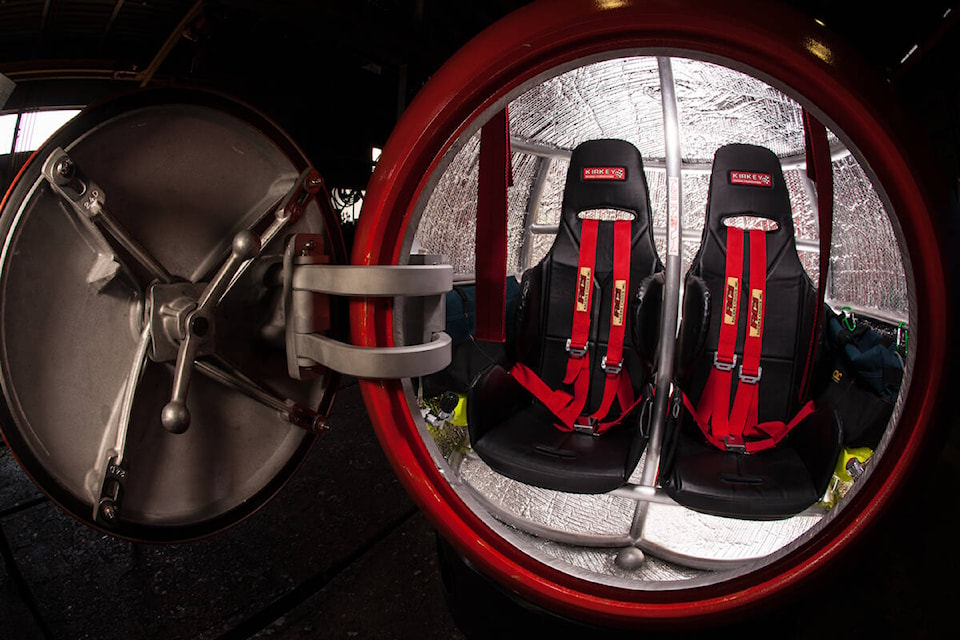Could saving lives during tsunamis mean climbing into fortified spheres for shelter? A Washington company is trying to make that happen.
Survival Capsule’s hard-shelled orbs hope to give people a shelter-in-place option during tsunamis when fleeing to safety isn’t possible.
Eddie Bernard, a researcher with Survival Capsule, said the Cascadia subduction zone poses a significant tsunami hazard for Vancouver Island and the western United States. He pointed to the fast-moving waves being especially deadly when for those who get caught.
“Once you’re engulfed in a tsunami, your chances of survival are very small,” said Bernard, who teaches tsunami awareness through the University of Hawaii’s National Disaster Preparedness Training Centre.
Those who can’t make it to the safety during tsunami events face risks like drowning, being crushed by floating objects or being exposed to toxins being carried in the water, Bernard said. The water-tight, aircraft-grade aluminum and insulated design of Survival Capsule’s sphere’s could help save lives, he said.
Julian Sharpe, Survival Capsule’s president, said that their concept for a personalized safety system was inspired by the threat of tsunamis, but parties have also reached out to them about hurricane protection. The company currently has capsule designs that range from two to 16 seaters. While the protective pods are made on the west coast, separate production will begin in Japan – where 18,000 died from a 2011 tsunami – next year to serve that country and the surrounding market.
READ: ‘Most extreme’ rogue wave ever recorded off B.C. reignites alternative energy interest
During a World Oceans Day panel, Bernard pointed to how the United Nations Ocean Decade campaign aims for 100 per cent of communities at risk of tsunamis to be prepared for and resilient to them by 2030.
Over 700 million people currently live in low-lying coastal areas and Small Island Developing States that are exposed to extreme sea events, the UN says. By 2030, it’s expected half of the world’s population will live in coastal areas exposed to flooding, storms and tsunamis.
Efforts on North America’s west coast have been made in the last two decades to prepare for potential tsunami events, with Bernard using Tofino’s tsunami evacuation maps as an example. Those jurisdictions should use that experience and be leaders in helping to prepare other coastal locations that will increasingly become at risk this decade, the researcher said.
“Probably the biggest problem with a natural disaster is that many communities never recover, they’re gone.”
When it comes to fostering resilient and sustainable communities, he said you first need to keep people alive.
“How many lives can we save and keep those communities from becoming impoverished or disappearing after a natural disaster.”
jake.romphf@blackpress.ca. Follow us on Instagram.
Like us on Facebook and follow us on Twitter.
